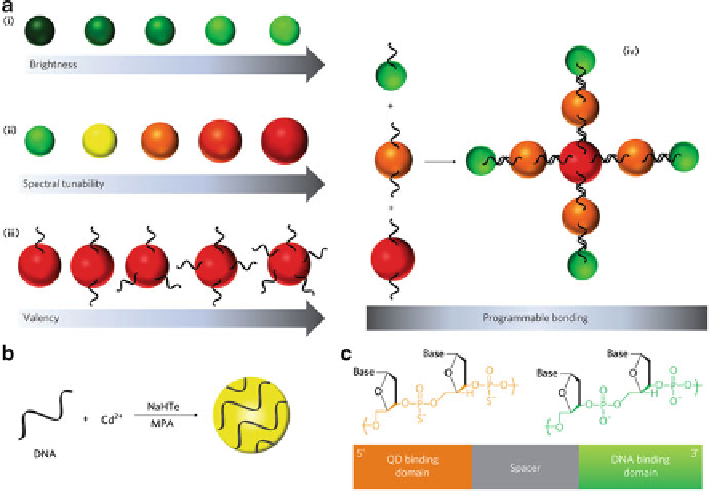Biomedical Engineering Reference
In-Depth Information
Fig. 8.8
One-pot synthesis of CdTe quantum dots with defined DNA bonding valences and
their assembly into hierarchically ordered discrete nanostructures (Reprinted by permission from
Macmillan Publishers Ltd: Ref. [
46
], copyright 2011)
composition of the quantum-dot-binding domain, which was then optimized to
contain 5-20 phosphorothioate G nucleotides. Interestingly, two simple factors,
including the length of the phosphorothioate DNA and the size of the quantum dots,
almost fully determined the average number (with impressively narrow statistical
distribution) of the DNA ligands on a CdTe nanoparticle, resulting in a series of
DNA bonding valencies from 1 to 5. This led to a purification-free process to obtain
DNA-decorated quantum dots with excellent valence control. This new type of
bionanoconjugates allowed for the building of various quantum dot superstructures
with a precise control on the number of nearest neighbors around each particle,
and the resulting materials showed pH-dependent luminescence due to tunable
interparticle energy transfer.
8.4.2
Carbon-Based Nanomaterials
Carbon nanotubes (CNTs) have received great attentions during the past two
decades ever since the pioneering findings by Iijima and Bethune et al. [
47
-
49
].
Besides a mechanically strong one-dimensional material, single-walled carbon
nanotube (SWNT) forms the basis of various nanoelectronic and sensing devices

Search WWH ::

Custom Search